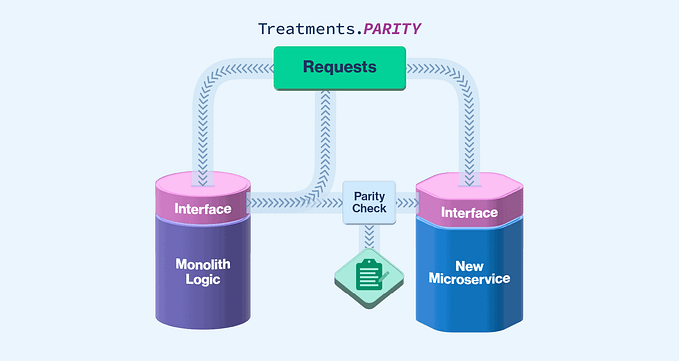
It has been a year now since I moved to San Francisco after accepting a job offer in the US. It has been an exciting journey so far. However, I remember it was a nerve-racking experience to wait for the TN visa approval and relocating to the US. I will describe below my progress of relocating to the US so to provide a clearer picture for those who are planning to move to the US for work. Please note that I’m not a lawyer or an accountant. It would be advisable to speak to them personally.
Before moving to the US

1. Getting your TN Visa ( 3–4 weeks )
TN visa is a temporary working visa between the US and Canada which allows Canadian in certain industries to work in the US provided that you have an employer’s sponsorship. This normally lasts 3 years and can be renewed by the employer.
I went through premium processing when getting a TN visa where my employer would submit a pre-approval before I entered the US border. Premium processing is a great option to go through because it gives you an ease of mind knowing that you have already been pre-approved for the TN visa before you cross the border to the US.
- My employer’s immigration lawyer first contacted me to provide the following materials to get the TN visa processing started.
- Scan a copy of official transcript
- Scan an official degree
- Scan of a copy of your resume
- Scan all pages of your passport
Note: It took me 3 days to prepare and also request an official transcript from the school.
2. Once I have uploaded all my documents,
- My lawyer takes 3 days to prepare and send my application and Form I-907 (Request for Premium Processing Service) to the USCIS (US Citizenship and Immigration Services)
- USCIS takes 15 days to process the application upon receiving it
- Your application could be rejected, or approved within 15 days.
- If it’s approved, you will receive your pre-approved notice from your lawyer which you will need to bring at the border.
2. Setup a US-Canada cross-border bank account and Visa in Canada ( 1 week to receive the card )
When moving to a new country, you will not have any credit history, so finding a place or getting a cell plan can be challenging. It’s best to setup a US cross-border debit and credit card in Canada. Once you move to the US, you can update your credit card with US SSN. Doing so will carry over your Canadian credit score to your US credit score. Additionally, I like to use Credit Karma to closely monitor my credit score.
Majority of large Canadian banks such as TD, BMO, RBC, and CIBC offer cross-border banking. Here are list of cards that offer cross border banking. It takes about one week to receive your card. Please plan ahead before your trip to the US.
3. Finding a place in San Francisco
- If your company provides you a corporate temporary housing, use that.
- If they don’t have that option like my case, I recommend to first reach out to your employer’s network or friends. Ask them to help you post through their internal company network. I chose to look for a short term stay, 1 to 2 months, before looking for a more permanent place so that I could take some time to explore the city.
- You can also join the San Francisco Friends Looking for Housing Facebook group.
4. If you are planning to declare yourself as a non-resident in Canada, don’t forget to call CRA and let them know that you are moving.
I also filed NR73 form which is NR73 Determination of Residency Status. You might want to do this if you don’t want to pay tax back to Canada.
5. Speak to your accountant about your tax implications once you become non-resident of Canada
Tax can be complicated once you moved to the US and when you become a resident of US. TFSA will be taxable when you become resident of the US since US does not have a TFSA account. RRSP is safe to keep in your account as it would be equivalent to 401K which is a retirement fund in the USA. RRSP is still tax deducible. I’m not going to go over the taxes as I’m not an expert in this. Please consult with an accountant.
Upon arrival in US

1. Getting your Social Security Number
This is very important as you will need this to get paid and set up your bank account. To get your SSN, you will need to go to a local Social Security Office. Let them know that you need a SSN card. Explain to them that you have just moved from Canada. The documents you will need to bring you are: passport with the visa stamp, I-94, and employment verification letter. Please be sure to give them a call beforehand, and see if you can make an appointment. You can reach them at (866) 964–1726. Here is a link for more information. Lastly, you can get your I-94 here.
2. Setting up your bank account
I recommend using Bank of America or Citi bank if you are a RBC customer. It is easy to open an account with them. You can open a bank account without your SSN. Just be sure to take over your employment verification letter, foreign passport, and I-94. That should be enough documentation. You will have to update the bank with your SSN once you get the number.
3. DMV for driver’s license and California ID
You will need to set up an appointment with the DMV before getting your driver’s license and the ID. You can make an appointment here. If you want to get your driver’s license, you need to take a written test, and a behind the wheels test. For more information, here is an FAQ with all the information you will need to get your license! If you wish, you can just get your California ID first and get the driver’s license later.
4. Looking for a long term stay
San Francisco is a very expensive city. Make sure you have enough cash to pay for 1 month of rent and 1–2 month of deposit. Rent can range from $1500 for a shared housing to $3500 for a one bedroom apartment.
I would avoid areas in Tenderloin and Mission St in Mission District as those areas are not safe.
As I mentioned earlier, it’s best to contact your friends and coworkers to avoid getting scammed or stuck with a weird roommate.
That’s it! Please feel free to reach out to me on twitter @liyangz.
P.S. If you want to know how I prepared interviews in US while I was working in Canada, you can also checkout this blog.










